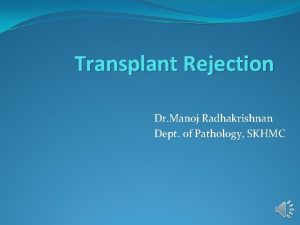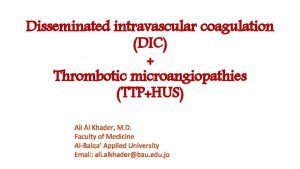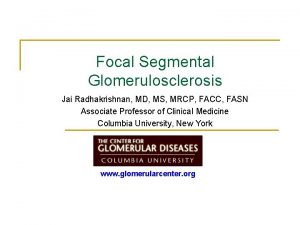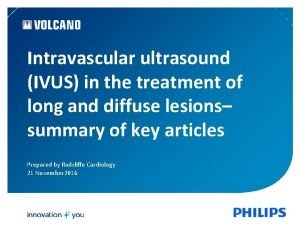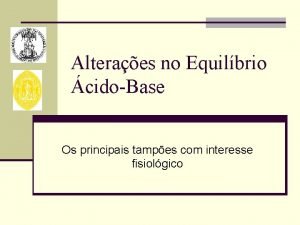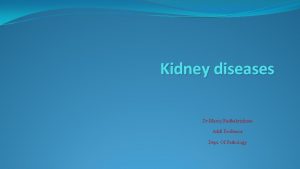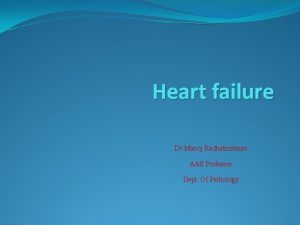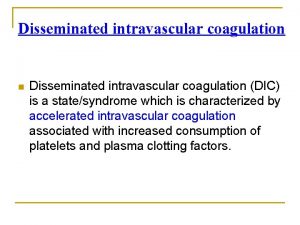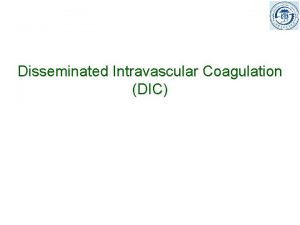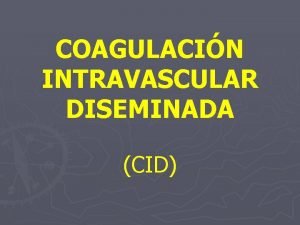Diffuse Intravascular coagulation Dr Manoj Radhakrishnan Addl Professor







- Slides: 7

Diffuse Intravascular coagulation Dr. Manoj Radhakrishnan Addl Professor Dept. Of Pathology

Defn DIC � Is a form of micro-angiopathic thrombosis characterised by consumptive coagulopathy. � Represents a clotting disorder characterised by formation of thrombi in small blood vessels(arterioles, capillaries & venules) � Formation of these microthrombi consumes the platelets leading to thrombocytopenia. � Depletion of fibrin(hypofibrinogenemia) � depletion of coagulation factors. � This creates a situation of bleeding which cannot be stopped.

common causes of D. I. C � D. I. C can be triggered by many mechanisms , including, � Infections: This is most often caused by gram negative sepsis , but it maybe caused by fungal infections, meningococcemia, and many other infections. � Neoplasms : Most often the underlying causes are carcinomas of the GIT and granulocytic leukemia. � Massive tissue Injury : The best known examples are traffic trauma , burns and extensive surgery. � Shock : Any form of shock can result in D. I. C � Obstetric complications : D. I. C is typically a complication of amniotic fluid embolism , eclampsia and abruptio placentae, but it may occur in many other pregnancy related conditions.

Pathogenesis of D. I. C �Initiated by three often inter-related pathways : q Activation of Hageman factor initiating the intrinsic coagulation cascade. (massive tissue injury will release or activate enzymes ) q Thromboplastins activating the extrinsic coagulation pathway. (tissue injury also releases thromboplastins) q Endothelial cell injury �Lipo-poly-sacharides of gram negative bacteria can act through all 3 mechanisms

Pathologic findings in D. I. C �The most prominent findings are numerous fibrin thrombi in small vessels. �These microthrombi are easily found in the heart, brain, glomeruli of the kidneys , and other sites. �Microthrombi cause microscopic infarcts. �Most patients die before such foci of ischemic necrosis become histologically apparent.

Waterhouse – friderichsen syndrome �Represents a DIC caused by Neisseria Meningitidis. � Typically it presents with purpura of the skin and hemorrhagic infarction of the adrenals.

Laboratory findings in DIC �All bleeding tests Prothrombin time(PT) & activated partial thromboplastin(Aptt) times are prolonged. �Thrombocytopenia occurs � Fibrin degradation products appear in urine.
